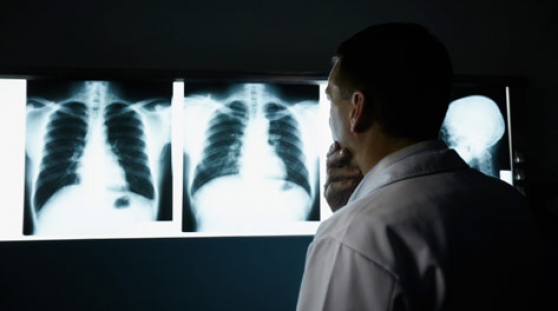Lung Cancer Health Center
Table of Contents

The only sure way to know if lung cancer is present is for a pathologist to check samples of cells or tissue. The pathologist studies the sample under a microscope and performs other tests. There are many ways to collect samples.
Your doctor may order one or more of the following tests to collect samples to be analyzed for cancer cells:
- Sputum cytology. Thick fluid (sputum) is coughed up from the lungs.
- Thoracentesis. The doctor removes fluid (pleural fluid) from the chest.
- Bronchoscopy. The doctor inserts a thin, lighted tube (a bronchoscope) through the nose or mouth into the lung.
- This allows an exam of the lungs and the air passages that lead to them.
- The doctor may take a sample of cells with a needle, brush, or other tool.
- The doctor also may wash the area with water to collect cells in the water.
- Fine-needle aspiration. The doctor uses a thin needle to remove tissue or fluid from the lung or lymph node.
- Sometimes a CT scan or other imaging method is used to guide the needle to the lung tumor or lymph node.
- Thoracoscopy. The surgeon makes several small incisions in your chest and back.
- The surgeon looks at the lungs and nearby tissues with a thin, lighted tube.
- If an abnormal area is seen, a biopsy to check for cancer cells may be needed.
- Thoracotomy. The surgeon opens the chest to remove lymph nodes and other tissue.
- Mediastinoscopy. The surgeon makes an incision at the top of the breastbone.
- A thin, lighted tube is used to see inside the chest.
- The surgeon may take tissue and lymph node samples.
